- Author Matthew Elmers [email protected].
- Public 2023-12-16 21:49.
- Last modified 2025-01-24 09:17.
German 20-mm anti-aircraft guns have proven to be a fairly effective means of dealing with aircraft operating at low altitudes. However, the rate of fire of the Flak 28, FlaK 30 and Flak 38 single-barreled anti-aircraft guns was not always enough to hit fast-moving targets, and the Flakvierling 38 quad mounts were too heavy and cumbersome. In addition, the destructive effect of 20-mm fragmentation shells was still very modest, and for the reliable removal of the Il-2 attack aircraft, it was often necessary to achieve several hits. In this regard, in 1942, in Germany, they began to create anti-aircraft guns, which, with a rate of fire comparable to 20-mm machine guns, had an increased effective range of fire and a great destructive effect when they hit the target.
However, the Germans already had some experience in operating 25-mm French anti-aircraft guns manufactured by Hotchkiss. The first modification of the 25-mm installation appeared in 1932, but the leadership of the French military department showed no interest, and until the second half of the 30s, anti-aircraft guns were allowed only for export. Only in 1938 did the French army order a small batch of 25-mm anti-aircraft rapid-fire rifles. The first model, known as the Mitrailleuse de 25 mm contre-aéroplanes modèle 1938, had an original tripod carriage and store food. On the international arms market, this modification was most often designated as 25 mm CA mle 38.
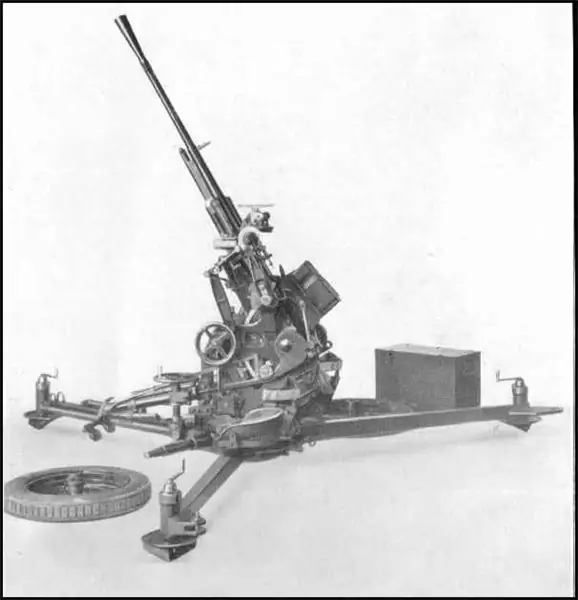
The installation Mitrailleuse de 25 mm contre-aéroplanes modèle 1939 (25 mm CA mle 39) became more widespread, featuring a modified, more stable carriage. A detachable wheel drive was used for transportation.
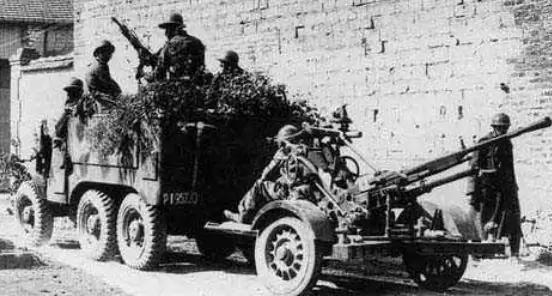
The 25 mm anti-aircraft gun 25 mm CA mle 39 in the firing position weighed about 1150 kg. She was served by a calculation consisting of 9 people. For food, magazines for 15 shells were used. The rate of fire was 250 rds / min. Practical rate of fire: 100-120 rds / min. Vertical guidance angles: -10 ° - 85 °. The effective firing range is up to 3000 m. The altitude reach is 2000 m. The fire was fired with 25-mm rounds with a sleeve length of 163 mm. The ammunition load could include: high-explosive incendiary, fragmentation tracer, armor-piercing, armor-piercing tracer shells. A high-explosive incendiary projectile weighing 240 g left the barrel with an initial speed of 900 m / s and contained 10 g of explosives. At a distance of 300 meters, an armor-piercing projectile weighing 260 g, with an initial speed of 870 m / s along the normal, pierced 30-mm armor.
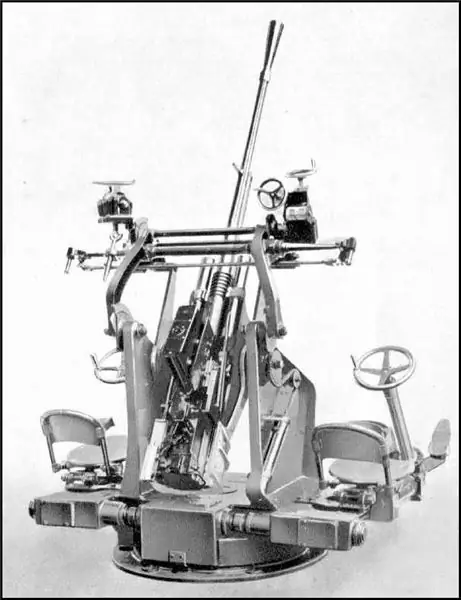
In 1940, a modification of the Mitrailleuse de 25 mm contre-aéroplanes modèle 1940 (25 mm CA mle 40) appeared, designed to be placed on stationary positions and on decks of warships. In this model, the mass of which reached 1500 kg, the rate of fire was increased to 300 rds / min. Even more rapid-fire was the Mitrailleuse de 25 mm contre-aéroplanes modèle 1940 jumelée.
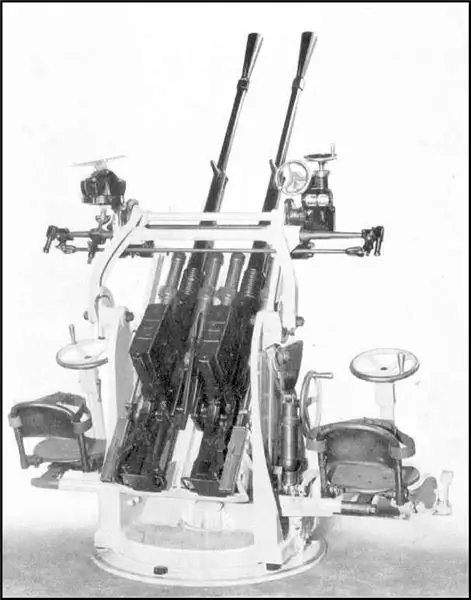
In total, the French armed forces received about 800 25 mm CA mle 38/39/40 anti-aircraft guns, which clearly did not meet the needs. About half of the 25-mm anti-aircraft guns were captured by the Germans. About 200 more units were assembled at the Hotchkiss plant after the occupation of France. In the German army, the French 25-mm anti-aircraft guns received the designation 2.5 cm Flak 38/39 (f). In addition to the Wehrmacht, the same guns were used in the Romanian air defense.
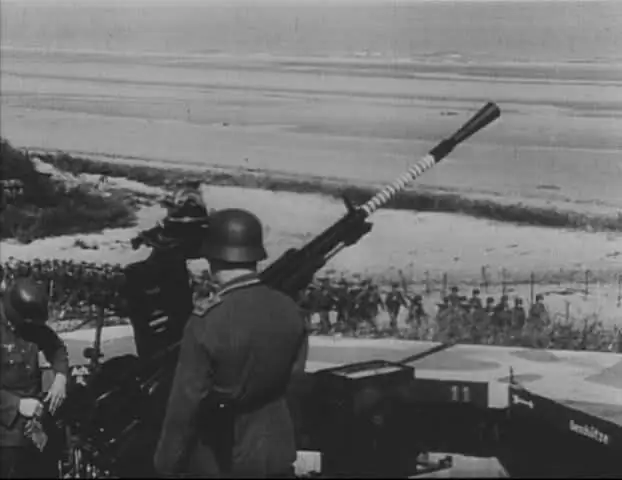
Most of the anti-aircraft guns 2, 5 cm Flak 39 (f) were placed in the fortifications of the Atlantic Wall, but some of the 25-mm French-made anti-aircraft guns still ended up on the Eastern Front.
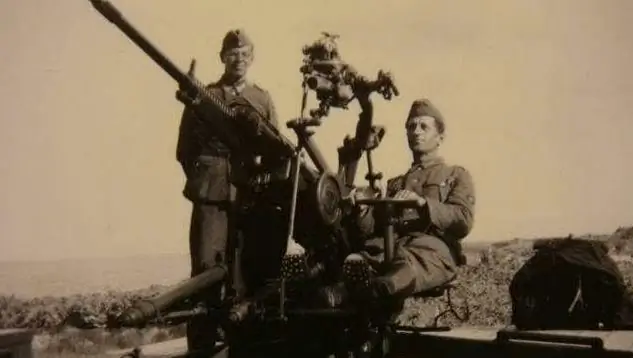
In general, the 25 mm CA mle 38/39/40 anti-aircraft guns were very good weapons for their time. Thanks to the fact that the designers of "Hotchkiss" abandoned the archaic rigid tape-cassettes, widely used in other products of this company, it was possible to increase the reliability. Now, much less dust and sand got inside the machine, which made it possible to reduce the number of delays when firing. With a combat rate of fire comparable to 20-mm German anti-aircraft guns, French 25-mm mounts had a greater effective firing range and height reach. When a 25-mm high-explosive incendiary projectile hit the aircraft skin, a hole was formed approximately twice as large as from a 20-mm fragmentation projectile.
Back in the late 1930s, German designers began developing 30-mm aircraft cannons. Weapons of this caliber were intended for fighters opposing long-range bombers, and it was also supposed to be part of the armament of anti-tank attack aircraft and anti-submarine defense aircraft. In the summer of 1940, Rheinmetall-Borsig AG introduced the Maschinenkanone.101 (MK.101) 30 mm aircraft cannon. For firing from this gun, a powerful shot of 30x184 mm dimension was created. An armor-piercing projectile weighing 455 g, with an initial speed of 760 m / s, when hit at a right angle at a distance of 300 m, could penetrate 32 mm of armor. Subsequently, an armor-piercing tracer sabot projectile was created for a 30-mm aircraft cannon, which at a distance of 300 m, when hit at an angle of 60º, could penetrate 50 mm armor.
The work of the MK.101 automatics was based on a short recoil of the barrel. The mechanical disconnector made it possible to fire both single shots and bursts at a rate of up to 260 rds / min. Food was carried out from box magazines with a capacity of 10 rounds or 30-charge drums. The mass of the gun with a drum for 30 rounds was 185 kg. The length of the gun is 2592 mm. Due to the significant weight and dimensions, and due to the limited capacity of the store, this aircraft gun was not widely used. At the beginning of 1942, an improved version appeared, which managed to get rid of many of the shortcomings. The new 30 mm MK.103 cannon weighed 145 kg without ammunition. The weight of the box with tape for 100 shots is 94 kg. The scheme of functioning of the automation is mixed: the extraction of the sleeve, the supply of the next cartridge and the advancement of the tape occurred due to a short rollback of the barrel, and the removal of powder gases was used to cocking the shutter and unlocking the barrel bore. The MK 103 cannon was powered from a metal loose strip with a length of 70-125 shells. Rate of fire - up to 420 rds / min. The direct firing range was 800 meters.
In terms of a set of characteristics, the MK.103 cannon was perhaps the best of its serial classmates. Soviet specialists familiarized with the captured MK.103 rated it positively. In the conclusion, based on the results of the tests, it was noted that the 30-mm German belt-fed aircraft gun has a high rate of fire for its caliber. The design of the weapon is quite simple and reliable. The main disadvantage, according to our experts, was the strong shock loads during the operation of the automation. In terms of the complex of combat characteristics, the MK.103 occupied an intermediate position between the 23-mm VYa cannon and the 37-mm NS-37 and, in general, was more suitable for arming an armored attack aircraft. However, too strong recoil, which the multi-chamber muzzle brake could not soften, and the sharpness of the automatic operation limited the use of 30-mm cannons as part of the armament of single-engine fighters. The production of MK.103 was carried out from mid-1942 to February 1945, and a significant number of unclaimed 30-mm guns accumulated in the warehouses of the Luftwaffe, which became the reason for their use in anti-aircraft installations.
At the first stage, as in the case of other aircraft machine guns and cannons, MK.103 were mounted on handicraft anti-aircraft carriages. In the summer of 1943, the first 30mm cannons were mounted on primitive and rather crude turrets. Thus, the ground personnel of the Luftwaffe tried to strengthen the air defense of field airfields.
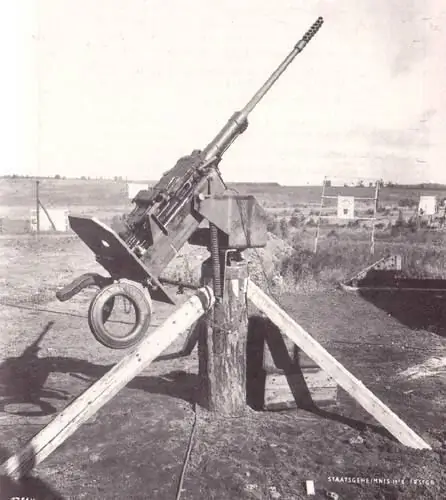
The most effective when firing at air targets turned out to be: 330 g high-explosive projectile 3 cm M.-Gesch. o. Zerl., Containing 80 g of TNT, and 320 g of high-explosive tracer 3 cm M.-Gesch. L'spur o. Zerl., Loaded with 71 g of phlegmatized RDX mixed with aluminum powder. For comparison: the Soviet 37-mm fragmentation-tracer projectile UOR-167 weighing 0.732 g, which was included in the ammunition of the 61-K anti-aircraft machine gun, contained 37 g of TNT.
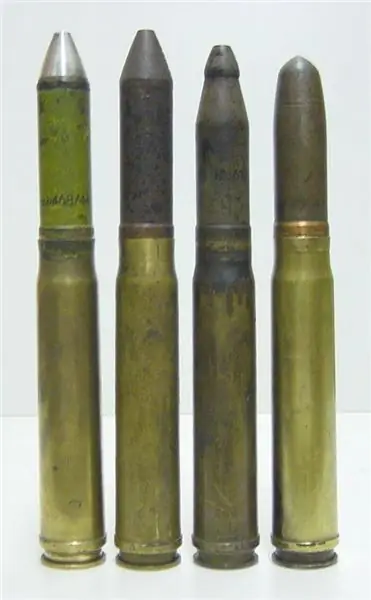
Hitting high-explosive 30-mm shells in any part of the Il-2 attack aircraft resulted in lethal damage. For the manufacture of especially powerful 30-mm projectiles with a high explosive filling ratio, the technology of "deep drawing" was used, followed by quenching of the steel body with high-frequency currents.
In the middle of 1943, the designers of Waffenfabrik Mauser AG, by imposing an aircraft cannon on the machine of a 20-mm Flak 38 anti-aircraft gun, created a 3.0 cm Flak 103/38 installation. Although this installation was largely a forced improvisation of wartime, in general it turned out to be very successful.
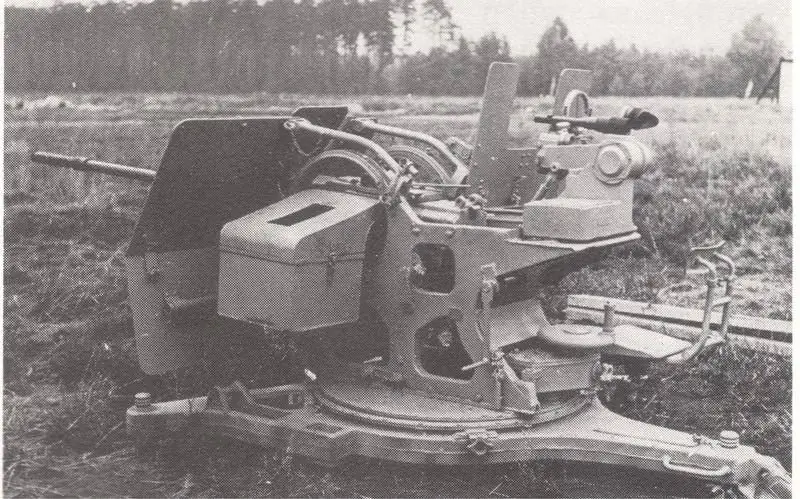
Compared to the 20-mm anti-aircraft gun, the increase in the caliber of the artillery unit led to an increase in weight by about 30%. The weight of 3.0 cm Flak 103/38 in the transport position was 879 kg, after separation of the wheel travel - 619 kg. According to expert estimates, the effectiveness of the 30-mm anti-aircraft gun has increased by about 1.5 times. At the same time, the effective fire range increased by 20%, but due to the use of a feed belt and a 40-shell box, the combat rate of fire increased significantly. In addition, the power of the 30-mm projectile was twice as large as the 20-mm projectile. Thus, to shoot down an armored attack aircraft or a twin-engine dive bomber, as a rule, it took no more than 2-3 hits from a fragmentation tracer or 1 hit from a high-explosive projectile. Since the heavier 30-mm projectile lost its energy more slowly, the maximum oblique firing range at air targets was 5700 m, and the height reach was 4700 m.
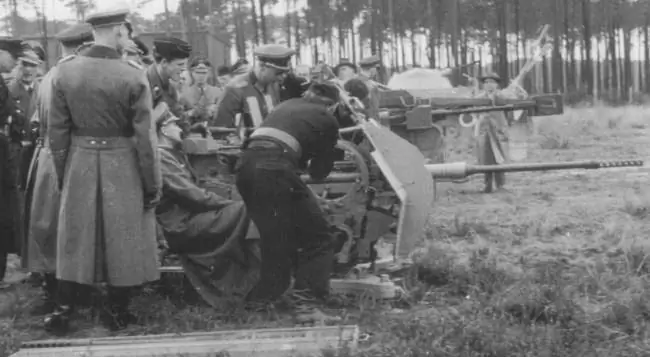
Single-barreled anti-aircraft guns based on MK.103 on a standard carriage of 20-mm anti-aircraft guns 2, 0 cm Flak 38 were used both in a towed version, placed on the chassis of armored personnel carriers or in the bodies of trucks.
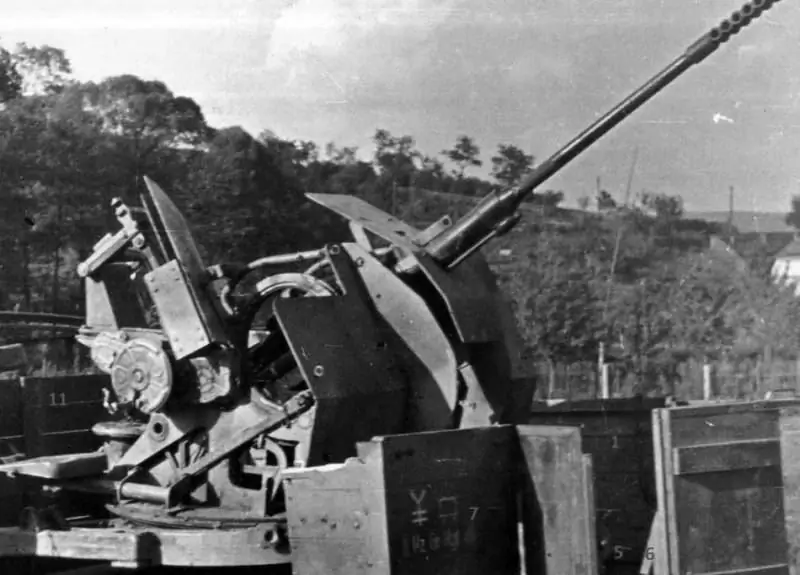
Most often, 30 mm assault rifles were installed on Steyr 2000A trucks. Austrian-made multi-purpose vehicles Steyr 270 during the Second World War were widespread in the German armed forces. All-wheel drive Austrian vehicles were available in all branches of the armed forces and were used to transport soldiers and various goods. Steyr 1500A with 85 hp engine. could carry up to 1.5 tons or serve as a light tractor. In 1944, an extended version of the Steyr 2000A with a carrying capacity of 2 tons went into production.
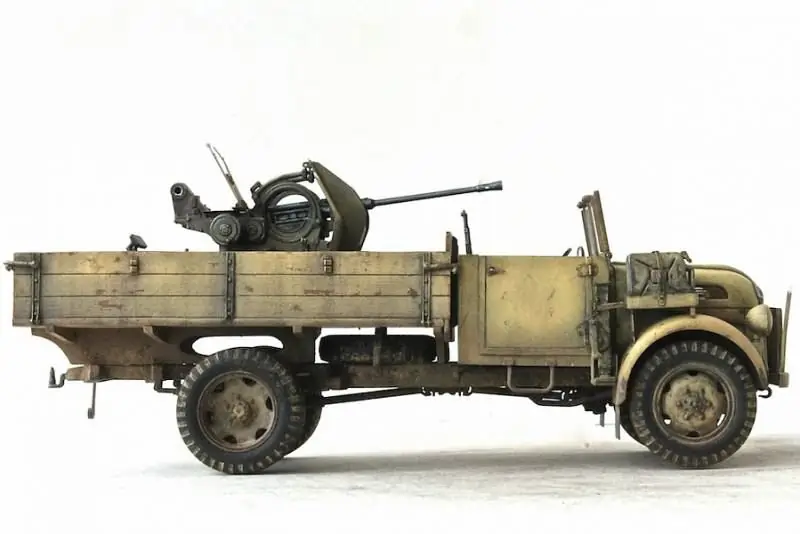
On the basis of this model, Graubschat Berlin in the second half of 1944 created the Steyr 2000A mit 3, 0 cm Flak 103/38 "Jaboschreck" anti-aircraft self-propelled gun. The final assembly of the ZSU took place at the Ostbau plant in Sagan (now Poland). In order to reduce the cost of production, the cabin was made open. To protect against bad weather, an awning could be installed over the driver's workplace and the body on removable arches. In addition to the armored shield, the calculation of the improvised anti-aircraft self-propelled gun was not covered by anything from bullets and shrapnel, and as a result, it turned out to be very vulnerable when repelling air raids.
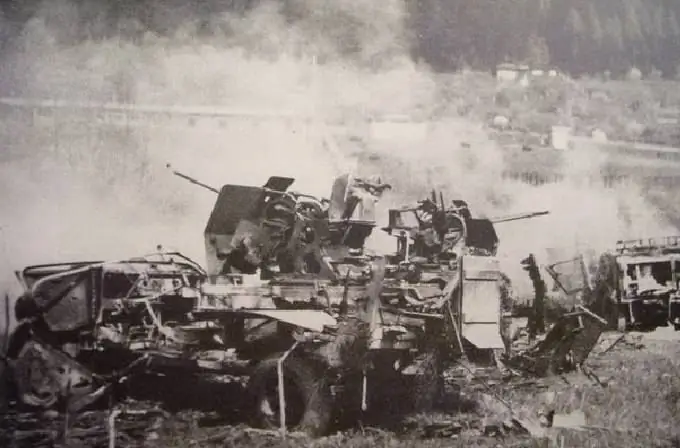
The exact number of built ZSU is unknown, according to various sources, they were released from 50 to 70 units. Such a small number of self-propelled units built is due to the fact that their production was established at an enterprise, which was soon captured by the advancing units of the Red Army.
In addition to improvised unarmored ZSU on a cargo chassis, 30-mm aircraft cannons were used in full-fledged self-propelled anti-aircraft guns based on Czech-made Pz. Kpfw.38 (t) light tanks. Outwardly, this vehicle hardly differed from the serially produced ZSU Flakpanzer 38 (t) with a 20 mm automatic cannon.

Judging by the archival data, in 1945, shortly before the end of hostilities, in several Flakpanzer 38 (t) anti-aircraft tanks, the 2.0 cm Flak 38 submachine guns were replaced with 3.0 cm Flak 103/38. At least two such vehicles in May 1945 participated in battles on the territory of Czechoslovakia.
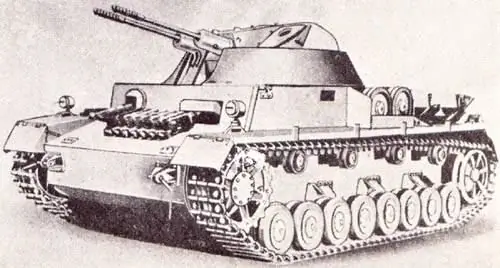
Also on the basis of the Pz. Kpfw.38 (t) tank in 1945, the Kleiner Kugelblitz (German Small Ball Lightning) ZSU with paired 30-mm cannons was developed. A similar installation, known as the "Kugelblitz" (German. Fireball), was created on the chassis of the PzKpfw IV medium tank. Until the end of the war, the Germans managed to release six ZSU with 30-mm sparks, which entered military trials.
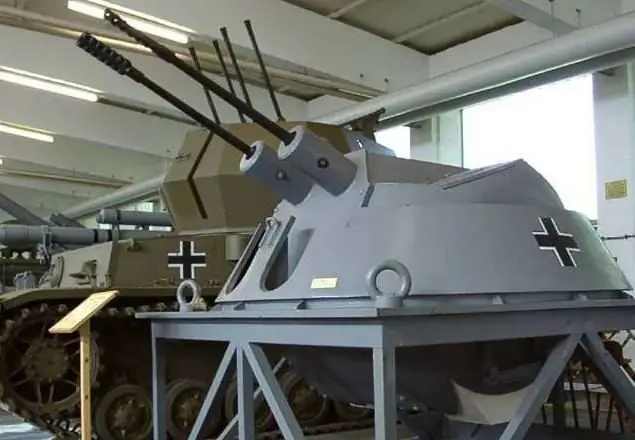
The tower for the "Ball Lightning" with two anti-aircraft guns was manufactured by Daimler-Benz in October 1944. The spherical turret was welded from 20 mm armor and, using a gimbal suspension, was mounted in a fixed 30 mm armor casing.
In the fall of 1944, the Czech company Waffenwerke Brünn (as Zbrojovka Brno was called during the occupation) began mass production of twin anti-aircraft guns 3.0 cm MK 303 (Br), also known as 3.0 cm Flakzwilling MK 303 (Br). Unlike the 3, 0 cm Flak 103/38 with a belt feed, the new anti-aircraft gun had a system for supplying ammunition from magazines for 10 shells, with a rate of fire from two barrels up to 900 rds / min. Thanks to the longer barrel, the muzzle velocity of the AP shell was increased to 900 m / s. Effective firing range at air targets - up to 3000 m.
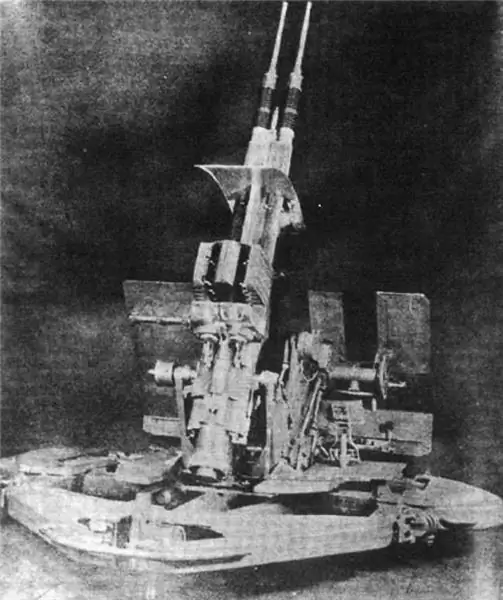
Initially, a paired 30-mm anti-aircraft gun was intended for installation on warships. However, most of the 3.0 cm Flakzwilling MK 303 (Br) was used on land-based stationary positions. Before the surrender of Germany, more than 220 anti-aircraft guns 3.0 cm MK 303 (Br) were transferred to the troops. In the post-war period, on the basis of an installation designed by a German order, a 30-mm twin anti-aircraft gun ZK-453 (M53) was created in Czechoslovakia, which was produced in a towed version and was used as part of the ZSU M53 / 59.
By analogy with the 20-mm quadruple anti-aircraft gun 2.0 cm Flakvierling 38, at the end of 1944, the 3.0 cm Flakvierling 103/38 was created using MK.103 cannons. Externally, the 30-mm quad mount differed from the 20-mm longer and thicker barrels equipped with a multi-chamber muzzle brake.
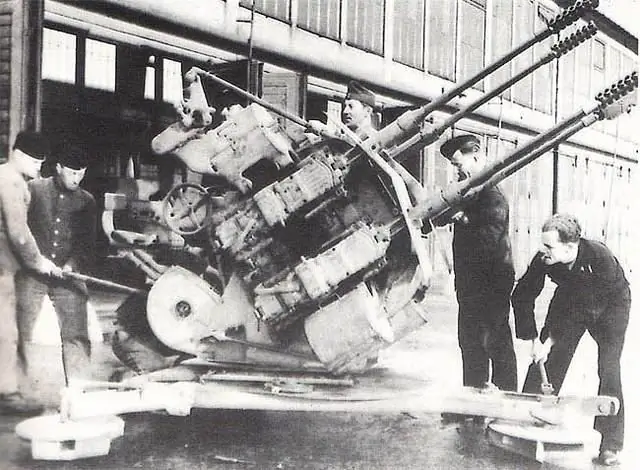
Compared to the 2.0 cm Flakvierling 38, the weight of the 3.0 cm Flakvierling 103/38 in the firing position has increased by about 300 kg. But the increase in weight was more than offset by the increased combat characteristics. In 6 seconds, the quad unit could fire 160 rounds in a continuous burst, with a total mass of 72 kg. The Verkhmat command planned to increase the firepower of the armored self-propelled guns and re-equip the Flakpanzer IV "Wirbelwind" ZSU with four 30-mm MK.103 cannons, capable of firing more than 1600 rounds per minute. This anti-aircraft self-propelled gun received the designation Zerstorer 45, and in January 1945, Ostbau Werke built an experimental prototype. In terms of firepower, this ZSU had no analogues at that time and could pose a serious danger both for combat aircraft operating at low altitudes and for Soviet tanks. But the rapid advance of the Red Army did not allow the mass production of self-propelled anti-aircraft guns, capable of seriously strengthening the German military air defense. In total, German and Czech enterprises assembled about 500 single-barreled, paired and quadruple units chambered for 30x184 mm. Germany's limited resources, incessant bombing of defense plants, and the successes of the Red Army did not allow the release of a number of 30-mm anti-aircraft guns in volumes that could have a significant impact on the course of hostilities.






